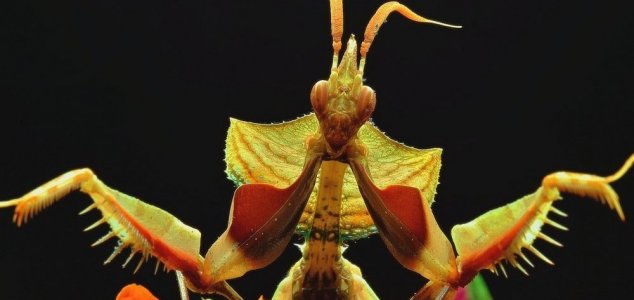Nature & Environment
November 1, 2021 · 5 comments
5 comments

Imagine meeting one of these the size of a dog... Image Credit: Pixabay / ElinaElena
Some of the species we take for granted today have the potential to change beyond recognition, while others - such as those that have remained practically unchanged for millions of years - may continue to eke out an existence without much evolutionary change at all.
In a recent podcast for Vox, evolutionary biologists and palaeontologists talked about their own predictions for the way that today's animals might evolve and change over the course of the next one million years.
Jingmai O'Connor - a palaeontologist at the Field Museum in Chicago - suggests that some of nature's best survivors - such as cockroaches, rats and pigeons - may evolve to fill the evolutionary niches left behind by the extinction of other, currently endangered species.
"For instance, if tigers go extinct in the next million years, perhaps flightless, carnivorous pigeons and rats will grow to the size of ostriches and snack on the animals that tigers once ate," he said.
Smithsonian evolutionary biologist Sahas Barve, meanwhile, imagines animals evolving to adapt to rising sea levels. Bats, for instance, could become much larger and develop the ability to glide for long distances over the ocean, while some species of insect - such as termites - could even develop the ability to feed on waste plastic pollution.
It is also possible that in the distant future, oxygen levels may rise to levels not seen for millions of years. If that happened, argues University of Washington biologist Sharlene Santana, we could once again see giant insects such as mantises the size of dogs and dragonflies the size of hawks.
The distant future, it seems, has the potential to be just as diverse as our planet's distant past.
Source: Vox.com | Comments (5)
Killer pigeons and dog-sized mantises could be in Earth's future
By T.K. RandallNovember 1, 2021 ·
 5 comments
5 comments
Imagine meeting one of these the size of a dog... Image Credit: Pixabay / ElinaElena
Biologists have been imagining what evolution may bring one million years from now.
While fossils have enabled us to learn about the gigantic beasts that once roamed our planet in its distant past, we can only speculate as to what evolution will bring in the distant future.Some of the species we take for granted today have the potential to change beyond recognition, while others - such as those that have remained practically unchanged for millions of years - may continue to eke out an existence without much evolutionary change at all.
In a recent podcast for Vox, evolutionary biologists and palaeontologists talked about their own predictions for the way that today's animals might evolve and change over the course of the next one million years.
Jingmai O'Connor - a palaeontologist at the Field Museum in Chicago - suggests that some of nature's best survivors - such as cockroaches, rats and pigeons - may evolve to fill the evolutionary niches left behind by the extinction of other, currently endangered species.
Smithsonian evolutionary biologist Sahas Barve, meanwhile, imagines animals evolving to adapt to rising sea levels. Bats, for instance, could become much larger and develop the ability to glide for long distances over the ocean, while some species of insect - such as termites - could even develop the ability to feed on waste plastic pollution.
It is also possible that in the distant future, oxygen levels may rise to levels not seen for millions of years. If that happened, argues University of Washington biologist Sharlene Santana, we could once again see giant insects such as mantises the size of dogs and dragonflies the size of hawks.
The distant future, it seems, has the potential to be just as diverse as our planet's distant past.
Source: Vox.com | Comments (5)

The Unexplained Mysteries
Book of Weird News
AVAILABLE NOW
Take a walk on the weird side with this compilation of some of the weirdest stories ever to grace the pages of a newspaper.
Click here to learn more

Support us on Patreon
BONUS CONTENTFor less than the cost of a cup of coffee, you can gain access to a wide range of exclusive perks including our popular 'Lost Ghost Stories' series.
Click here to learn more
United States and the Americas
Modern Mysteries, New Age and Prophecies
Earth, Natural Disasters and the Environment
Israel, Palestine and the Middle-East
Total Posts: 7,768,171 Topics: 325,018 Members: 203,762
Not a member yet ? Click here to join - registration is free and only takes a moment!
Not a member yet ? Click here to join - registration is free and only takes a moment!



































Please Login or Register to post a comment.